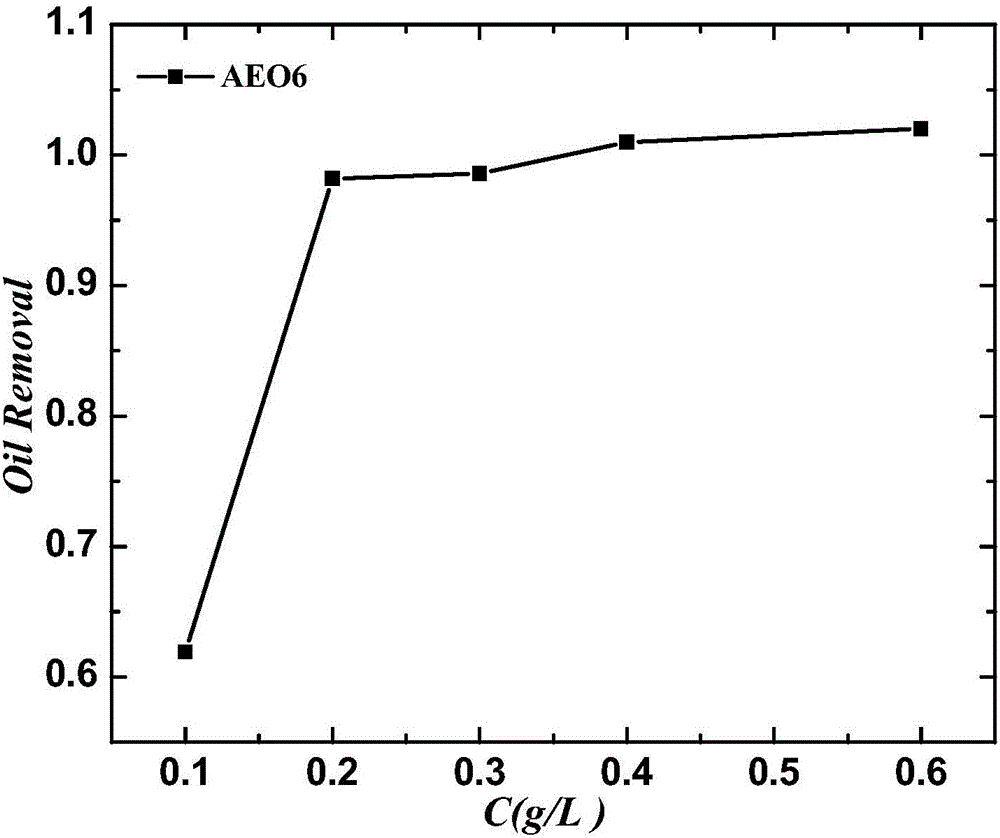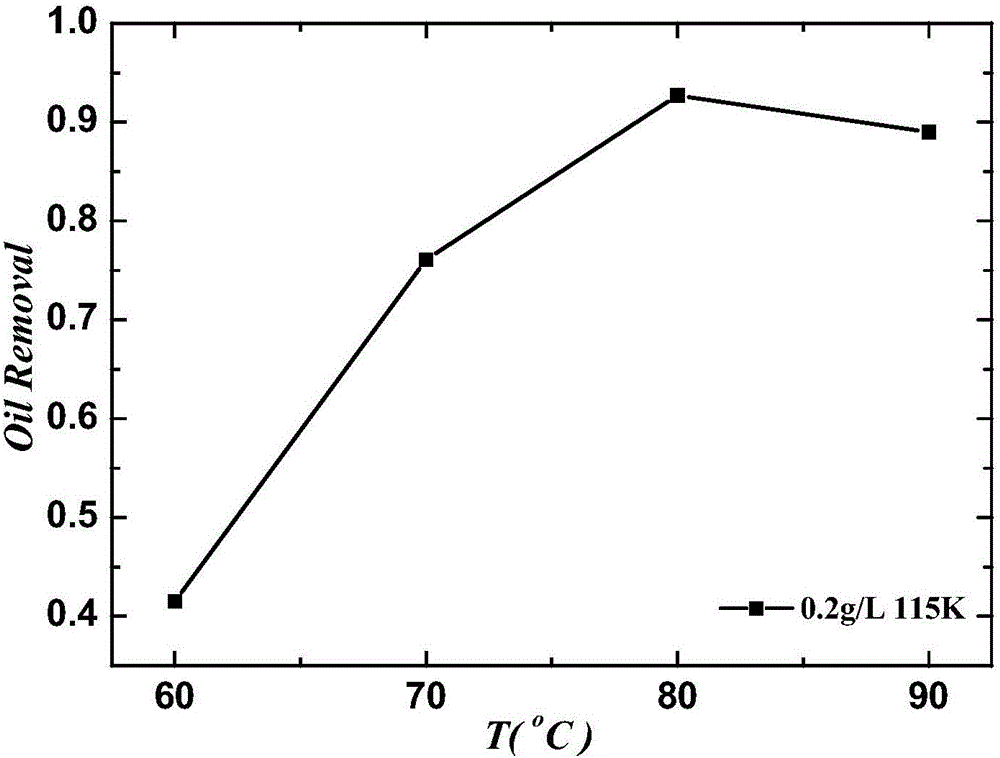Quantitative evaluation method for oil removing effect of oil removing agent for fabric
A technology for quantitative evaluation and degreasing, which can be applied in the direction of removing certain components, such as weighing, etc., can solve the problem that the color of the oil can not be quantitatively evaluated for the degreasing effect of the oil, and achieve objective, direct and methodical results. Simple, convenient and accurate results
- Summary
- Abstract
- Description
- Claims
- Application Information
AI Technical Summary
Problems solved by technology
Method used
Image
Examples
Example Embodiment
[0034] Example 1 The oil pick-up rate test experiment of 5# white oil on different fabrics. According to step 1), use ordinary polyester knitted fabric, white nylon / spandex knitted fabric, acrylic standard fabric (standard fabric for color fastness test), viscose standard fabric (standard fabric for color fastness test) as the base fabric, and pass the upper The oiling rate was obtained by weight data test before and after oiling, and the results are shown in Table 1.
[0035] Table 1 The oiling rate of 5# white oil on different fabrics
[0036] Weaving type Oil rate Ordinary polyester knitted fabric 16% White brocade / spandex knitted fabric 18% Acrylic standard cloth 15% Viscose standard cloth 20%
Example Embodiment
[0037] Example 2 Test experiment of 46# engine oil oil pick-up rate on different fabrics. According to step 1), use ordinary polyester knitted fabric, white nylon / spandex knitted fabric, acrylic standard fabric (standard fabric for color fastness test), viscose standard fabric (standard fabric for color fastness test) as the base fabric, and pass the upper The oiling rate was obtained by the weight data test before and after oiling, and the results are shown in Table 2.
[0038] Table 2 Oil application rate of 46# engine oil on different fabrics
[0039] Weaving type Oil rate Ordinary polyester knitted fabric 17% White brocade / spandex knitted fabric 16% Acrylic standard cloth 16% Viscose standard cloth 19%
Example Embodiment
[0040] Example 3 Test experiment of oil pick-up rate of simethicone oil (1000 mPa·s) on different fabrics. According to step 1), use ordinary polyester knitted fabric, white nylon / spandex knitted fabric, acrylic standard fabric (standard fabric for color fastness test), viscose standard fabric (standard fabric for color fastness test) as the base fabric, and pass the upper The oiling rate was obtained from the weight data test before and after oiling, and the results are shown in Table 3.
[0041] Table 3 The oiling rate of simethicone on different fabrics
[0042] Weaving type Oil rate Ordinary polyester knitted fabric 10% White brocade / spandex knitted fabric 20% Acrylic standard cloth 16% Viscose standard cloth 18%
PUM
 Login to view more
Login to view more Abstract
Description
Claims
Application Information
 Login to view more
Login to view more - R&D Engineer
- R&D Manager
- IP Professional
- Industry Leading Data Capabilities
- Powerful AI technology
- Patent DNA Extraction
Browse by: Latest US Patents, China's latest patents, Technical Efficacy Thesaurus, Application Domain, Technology Topic.
© 2024 PatSnap. All rights reserved.Legal|Privacy policy|Modern Slavery Act Transparency Statement|Sitemap


